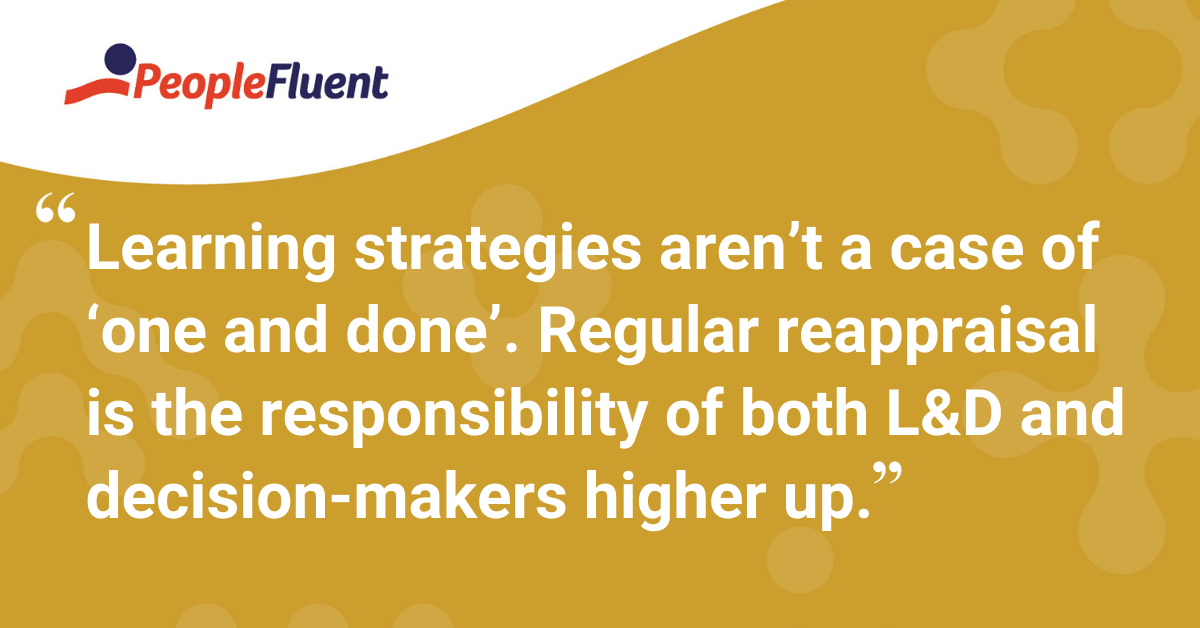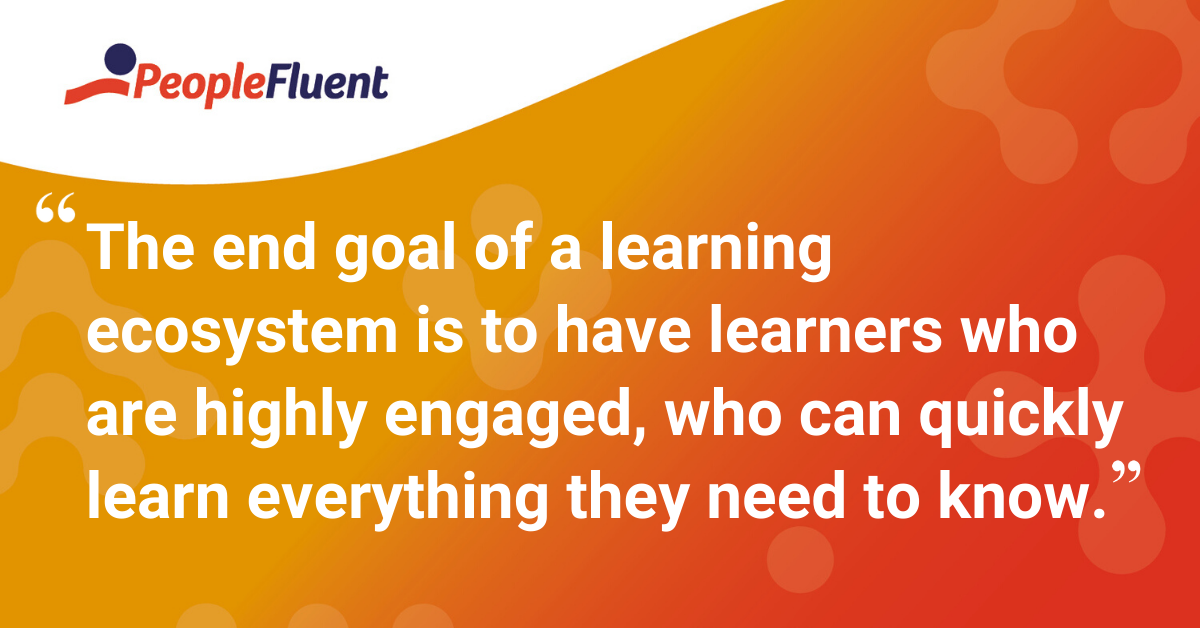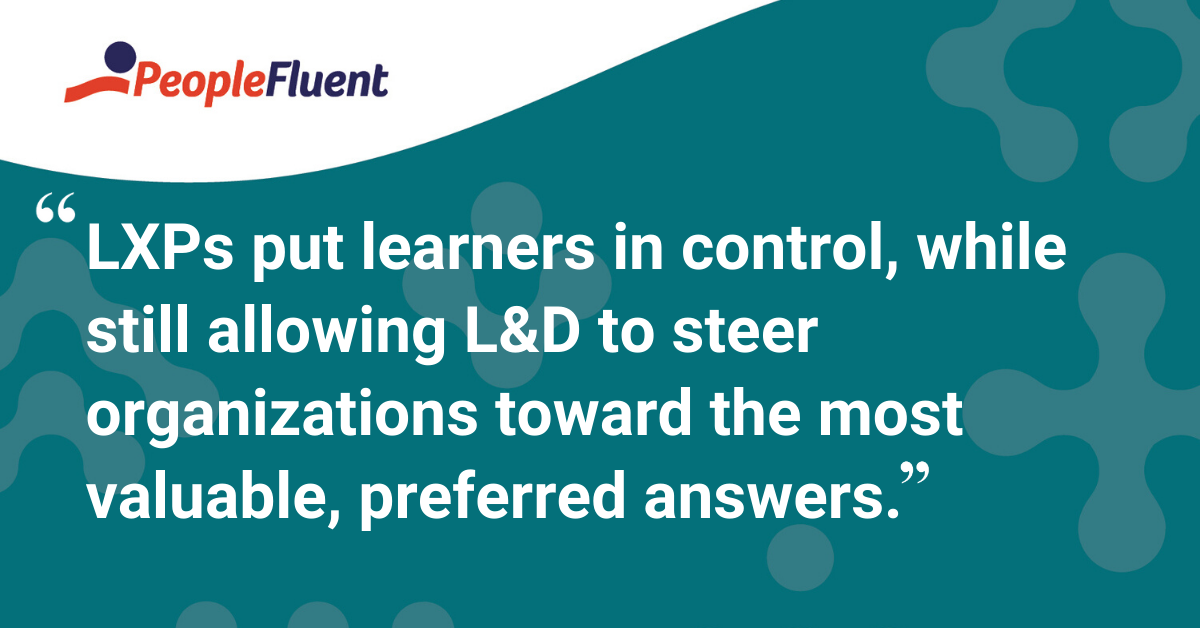Published: Mar 23, 2020Time to read: 4mins Category: Learning
3 Ways to Align Your Learning Technology Ecosystem to Your Learning Strategy
This blog post on learning technology ecosystems considers three steps organizations should take to align their choices with their wider learning strategy.
Learning ecosystems, just like those in the natural world, are diverse. While it would be hyperbolic to claim that no two learning ecosystems are alike, what your organization has and what it needs are likely to be distinct from the situation in most other organizations.
Organizations can also vary significantly in the maturity of their learning strategies and therefore their learning technology ecosystems will be a reflection of this maturity. However, there are definitely some common best practices that all could observe.
1) Connect Learning Strategy to Wider Business Strategies

Like corporate strategy, a learning strategy has to be reviewed, reconciled, and changed to reflect conditions inside and outside the organization. It is important to recognize that learning strategies aren’t a case of ‘one and done’. Regular reappraisal is the responsibility of both L&D and decision-makers higher up in the corporate structure. If an organization has clearly linked corporate, HR, and learning strategies, it’s more likely to understand and value an introspective L&D department.
L&D needs to understand how what it does moves the needle on company performance, and its goals need to be defined by company performance. Joining up corporate, HR and learning strategy has numerous benefits.
L&D benefits because stakeholders will better understand why the department needs new tools and increased budgets. Everyone else benefits from having an L&D department equipped to refine its approach and push employee performance forward.
More from the blog: "Strategies to Build an Effective Learning Program"
2) Map Your Learning Technology Ecosystem

Michael Rochelle, Chief Strategy Officer for the Brandon Hall Group states: “What matters most is whether or not you’ve taken the step of figuring out the current learning strategy you have. And then, whether you have mapped out how you develop and deliver content to your learners today and tomorrow to your learning strategy. From there, you can map out the learning technology ecosystem that will be needed to support the learning strategy.”
When it comes to learning technology ecosystem mapping, many organizations begin their technological mapping from the administrative side i.e. thinking from the learning organization out.
A better approach is to begin instead from the side of the learner—looking at the technology from the outside in. Rochelle suggests the following lines of questioning:
- What different types of learners do you have?
- What are the environmental conditions in which your learners find themselves?
- What are the differences in what your learners need to learn?
How do we improve the relevance and the accessibility of learning for the learner? The end goal of a learning ecosystem is to have learners who are highly engaged, who can quickly learn everything they need to know. This can be achieved only once you have identified the improvement areas for content relevance and learner accessibility. As Rochelle concludes: “When you overlay your map of learner needs on top of the learning technology ecosystem you already have in-house, you’re quickly going to see where the white spaces are on your canvas.”
3) Add Support For Systems Grown Outside of L&D

Part of understanding user need is understanding user’s habits despite your current learning technology ecosystem. For example, learners may have their own forums or messaging groups with colleagues or industry where they go to get questions answered. Equally, these answers may exist in a YouTube video, manufacturer support section or magazine article.
Bringing these learning channels into the fold so that they can be measured and properly integrated into your plan is a delicate process. These resources have proven relevant and accessible—anything that you add to your learning technology ecosystem must be sensitive to that fact.
Learning Experience Platforms (LXPs) like Instilled by PeopleFluent are designed to serve a learner’s needs in this way. LXPs create a single sign-on, unified experience for the learner, where the learner is in control of their own learning. The ability to link and catalog any piece of external content, as well as to upload video, can help re-contextualize all kinds of existing practices: solutions can be linked no matter where they were originally shared, and face-to-face teaching can be recorded in the same place.
LXPs put learners in control, while still allowing L&D to steer organizations toward the most valuable, preferred answers. A learner who is in control of their own learning is empowered, engaged and highly motivated. The result is learning that achieves a greater degree of depth and effectiveness.
Keeping reading: "5 Reasons Why the ‘Netflix of Learning’ May Be a Bad Idea"
Note: This post originally appeared on the Instilled.com blog.
Discover How Learning Builds Skills and Ensures Compliance
Design, deploy, track, analyze, and report on enterprise learning and compliance programs. PeopleFluent helps you execute your programs seamlessly, so employees upgrade their skills and you get results.